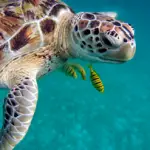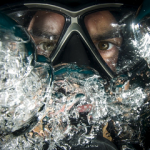
If you are new to scuba diving, or if you are considering taking up scuba diving, you may want to know the scuba diving basics. If you get the basics right, everything else will fall into place. But like doing anything new and for the first time, there will be a learning curve. But be patient and know that as with anything new, practice makes perfect.
The best way to do more diving is to book yourself on a scuba diving liveaboard. You can check the latest and best deals on liveaboards using the following window:
With that said, lets take a look at the scuba diving basics for beginners.
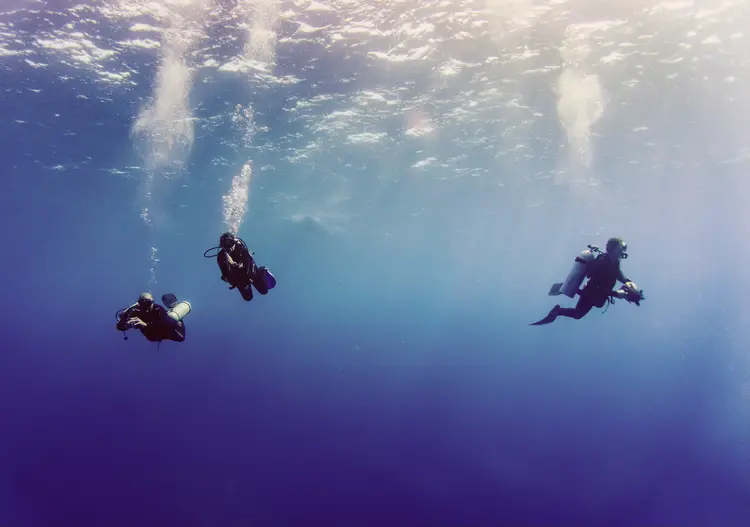
1. Buoyancy control is top of scuba diving basics
Mastering your buoyancy control is top of the list of scuba diving basics. Buoyancy control isn’t difficult, but it does take practice to get it right. It’s important you master this basic scuba diving skill so you can relax and enjoy your diving, but also so you don’t waste energy and air each time you correct your buoyancy.
Your aim with mastering this basic scuba diving skill is to be able to set your buoyancy when you reach your dive depth, and not to adjust it until you ascend at then end of your dive.
Pro diver tip: When you add air or dump air from your buoyancy control device (BCD), only do so with very small amounts of air at a time. This way you won’t over-fill your BCD and become overly buoyant and rise to the surface; or you won’t dump too much air to become negatively buoyancy and sink to the bottom.
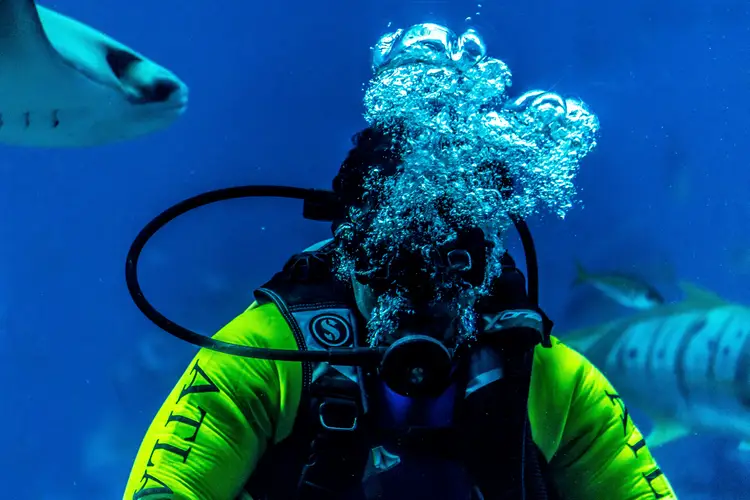
2. Breathing underwater is a basic skill to master
Learning to master your breathing underwater is one of the scuba diving basics to get right. When you scuba dive, you only have a finite amount of air to last for your dive. The more you improve your air consumption, the longer your dives will last. The longer your dives last, the more fun you’ll have. I recommend you read this list of 22 pro tips to improve your air consumption before your next dive.
There are four reasons why you may use your air faster when you first start diving, which include:
- Getting into a panic diving, which will cause you to breathe much faster than normal. This will result in you using up your air very, very quickly.
- Using more energy than you need to when scuba diving. This includes excess energy consumption when you don’t get your buoyancy under control. But also, if you don’t get your buoyancy right and you are constantly adding air and dumping air from your BCD, you are using up precious air from your dive tank.
- Using more energy by finning incorrectly. This includes using the peddling motion or the bicycle kick, which means you’re kicking your fins like you’re riding a bike (see video below) – don’t do this. You should be using your whole leg, with it slightly bent at the knee. I suggest you watch the following video for some basic finning techniques. Note that at the end of the video James tells you a finning technique you shouldn’t use; i.e. the bicycle kick.
- If you don’t get your trim right underwater, this will increase drag and means you will use more energy when finning. If you use more energy finning, you will consume your air much faster.
If you’re looking to improve your finning techniques, this masterclass from James Blackman at Divers Ready covers the 5 basic fin kicks for scuba diving.
Pro tip: To help conserve your air when you are learning to dive, you should remain calm and breathe normally.
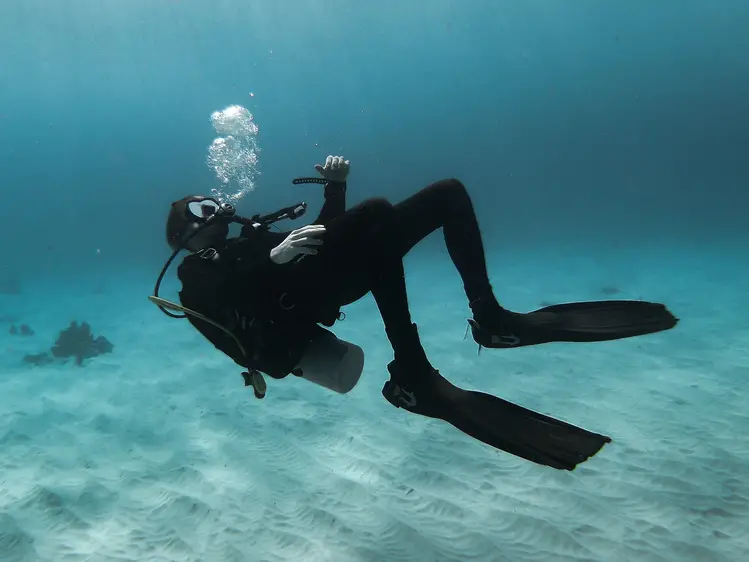
3. Getting your weight right is key as a beginner
An important scuba diving basic to get right is your weight. If you are over-weighted it’s more difficult to neutralise your buoyancy and you’ll use more air to do so. The best way to set your weight for any given scuba equipment setup is to do so at the end of your dive when your dive tank is nearly empty.
When your scuba tank is empty it will be lighter than when it’s full. With your tank nearly empty, which means it has your reserve air at the end of your dive, you should empty your buoyancy control device and remain neutrally buoyant.

This means you should be able to ‘hover‘ in the water (i.e. remain at the same depth), without kicking your fins and remain submerged below the surface by a few feet, neither rising to the surface, nor sinking to the bottom. This exercise is ideally done at your safety stop depth of 5-6 metres (16-20 feet).
- If you sink when you empty your BCD, this means you are over-weighted.
- But if you rise to the surface, it means you are under-weighted.
- Depending on what happens, add or subtract enough weights to achieve neutral buoyancy.
This will mean you are perfectly weighted for your next dive. However, if you change what equipment you are using, or if you change your exposure suit (e.g. to a thicker wetsuit, a semidry suit or a drysuit), you will need to change your weighting and check this again using the same process.

4. Learning to have fun is a top scuba diving basic
It’s important to not forget that scuba diving is to be enjoyed and for you to have fun. The more you dive, the more you’ll get to know your diving equipment and as you master your buoyancy, the more you’ll be able to enjoy your dives.
As you do more diving and gain more experience, you’ll discover what it is about scuba diving you really love to do. For me it’s scuba diving with big creatures like diving with sharks. But I also love to dive with seals in places like the Farne Islands too.
For you it might be the same, or you may get the bug for wreck diving, as many, many scuba divers have. If it’s wreck diving you love, you may end up diving Truk Lagoon wrecks, which is a wreck diving Mecca.
But whatever it is for you, this is what scuba diving is all about. It’s about the fun of the dive. Once you get the scuba diving basics sorted out, this is when it becomes great fun. The nerves fall by the wayside, you get better at air consumption, buoyancy control will become second nature to you, so it’s all so familiar that scuba diving becomes easy.
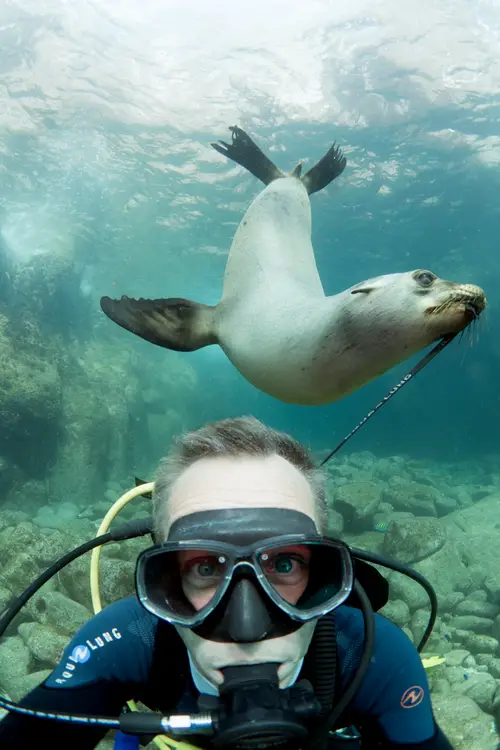
5. The right exposure suit is key to enjoying diving
One of the most important scuba diving basics is wearing the right exposure suit for the temperature of the water. If your exposure suit doesn’t keep you warm and you get cold, you’ll burn more energy during your dive and consume more air as a result, which will shorten your dive time.
You will need to decide between a wetsuit, a semi-drysuit or a drysuit, depending on how cold the water is. But you will also need to consider the thickness of your wetsuit if you are wetsuit diving, and whether you choose a full length wetsuit or a shorty.
If you are drysuit diving, you need to consider the undergarment and how warm this needs to be to stop you from getting cold.
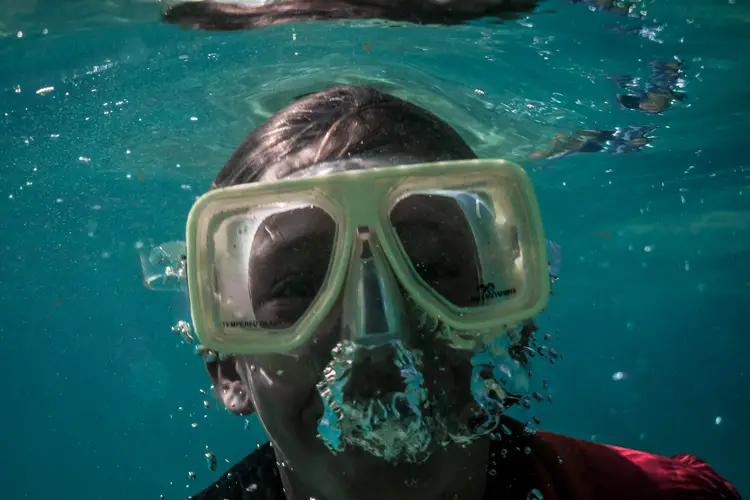
6. Scuba diving basics includes mask clearing
Mask clearing is one of the scuba diving basics to master when you learn to dive. But it’s also an important technique to know how to use even after your training is over. Mask clearing comes in handy in many situations, not least when and if you have a leaking mask on your dive.

7. Learning the basics of scuba diving hand signals
One of the basics of scuba diving is to learn the essential hand signals.
Scuba diving basic hand signals include:
- The okay signal – signifies if you are okay.
- Thumb’s down – descend.
- Thumb’s up – ascend. Avoid the temptation to use the thumb’s up to signify you’re ok, as this will become confusing to your fellow divers.
- Put your hand out with your palm face-down and twist it side to side – Not okay.
Pro tip: Always remember that the okay signal in scuba diving is both a question and an answer. Which means if you use the okay signal to another diver, you are asking them if they are okay. But if another diver gives you the okay signal, they are asking you if you are okay. Which means the diver you signalled the okay sign to should answer with the okay signal back. And you should return the okay signal back to the fellow diver who gave you the okay signal. However, if you are not okay, tell them this by using the ‘not-okay signal’.
I now recommend you read about liveaboard diving. Liveaboard diving is when you spend a few days on a dive boat diving up to three times every day. If you spend a week on a liveaboard dive boat, this will mean you add around 21 extra dives to your diving experience. Imagine what this will for your buoyancy control and you your underwater breathing technique. But also, think about the fun you’ll have too. Take a read about these top 10 liveaboard dive boats for beginners.
I hope you enjoyed this article about scuba diving basics for beginners
I’d love to hear from you. Tell us about your adventures of diving and snorkeling, in the comments below. But in particular if you’ve been on the Cat Ppalu liveaboard. Please also share your photos. Either from your underwater cameras or videos from your waterproof go-pro’s!
If this article hasn’t answered all of your questions. If you have more questions either about snorkeling or scuba diving (or specifically about scuba diving basics), please comment below with your questions.
There will also be many more articles about scuba and scuba diving safety tips (and on snorkeling too) for you to read and learn about this fabulous sport.
Have fun and be safe!


